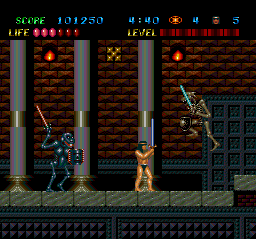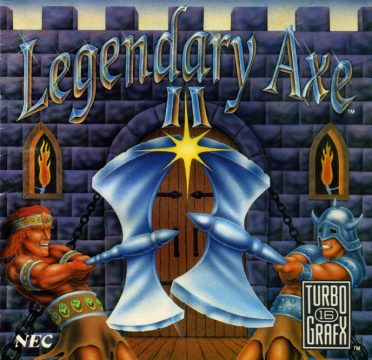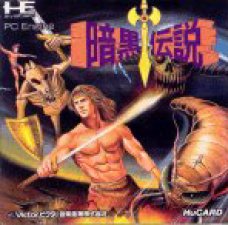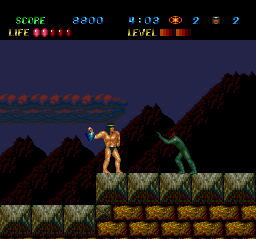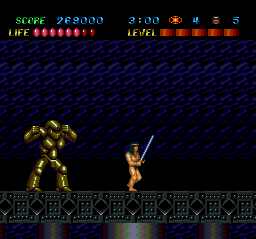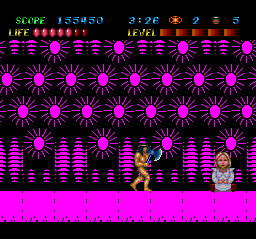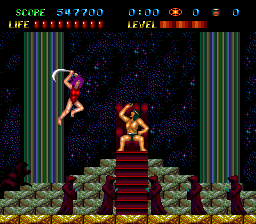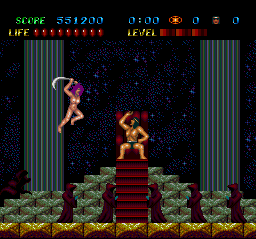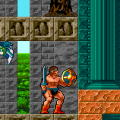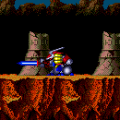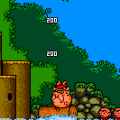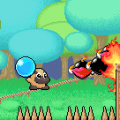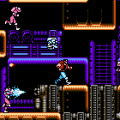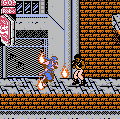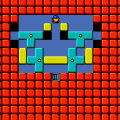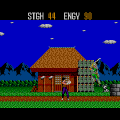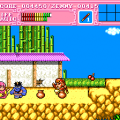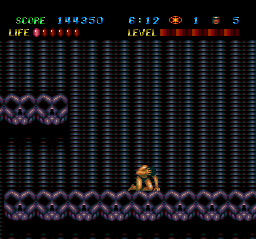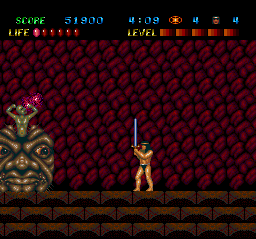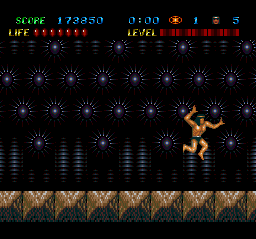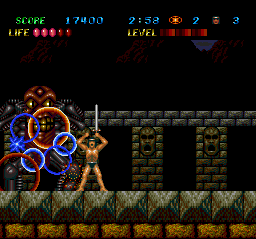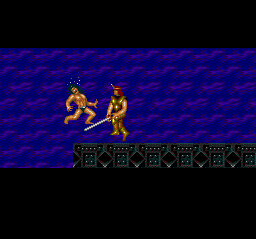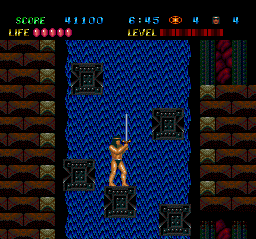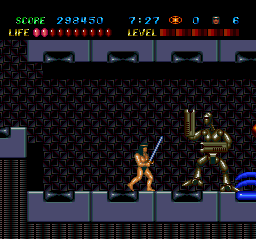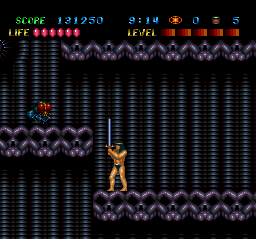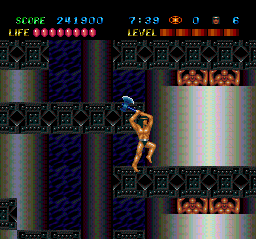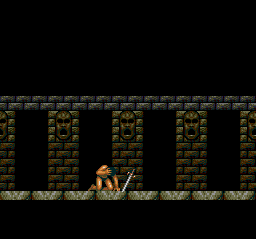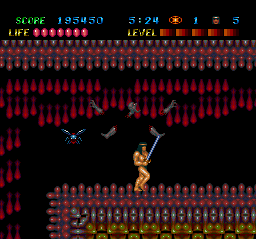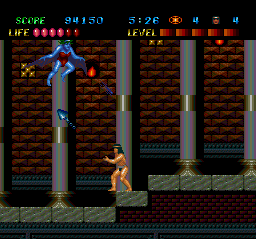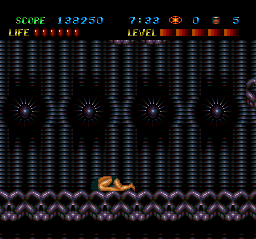- Legendary Axe, The
- Legendary Axe II, The
In 1990, Victor Musical Industries decided that the next Legendary Axe title should be based around almost-naked barbarians instead of almost-naked cavemen. They also tossed away the charging system that made the first game so unique, and designed a game that didn’t even look remotely like its predecessor. In spite of this, The Legendary Axe II is still a pretty decent game in its own right, if mostly because it’s not nearly as frustrating. The American title is misleading due the game not featuring an axe as the main weapon (even though it’s got a couple of short-looking barbarians holding bigass axes on the cover). In fact, the Japanese title, “Ankoku Densetsu” roughly translates to “Dark Legend”. The different titles have led people to believe that the American branch of Turbo Technologies Inc simply picked up a random game and slapped The Legendary Axe license onto it, but it was also marketed as a sequel in Japan, despite the different game and completely different theme.
The intro is ever-so-slightly reminiscent of Ninja Gaiden. You see lighting flashing while two barbarians are fighting. The hero, Prince Sirius loses to his brother Zach and is tossed off of a cliff into the first stage. The manual expounds upon all of this nonsense – King Brace, who saved the world from the evil, most despicable entity known only as “King Drodam,” united the kingdom and married Queen Grace, who bore two sons. Everybody was happy in the valley until good ol’ King Brace died and his two sons, Sirius and Zach, fight for the throne.
Characters
Prince Sirius
The manly hero who wears nothing but a thong – his skimpy outfit is the only relationship to the original game.
There are some pretty substantial changes in your arsenal, beyond the removal of the charging system. For starters, there are now multiple weapons. The sword is your default weapon and has standard reach and power. The morning star can attack in four directions and has the longest reach of all the weapons, but has the lowest attack power. The axe has the highest attack power, but the shortest reach. You can also lob smart bombs by hitting the Run button, which attacks everything on the screen.
The level design has also undergone a significant overhaul. There’s much less platforming than the original game, which is a mixed blessing – on one hand, it removes all of the annoying jumps of its predecessor, but it also makes the landscape seem kinda dull and colorless. It doesn’t help that the game looks pretty terrible – the whole game is overly dark, the backgrounds are sparsely detailed, and the sprites are quite laughable. Like the first game, most of the stages are fairly linear, except for the final stage, which is an incredible labyrinth that makes Daedalus’ labyrinth pale in comparison.
The removal of the charging system also has its pros and cons. On one hand, it removed the unique stop-and-go feeling of its predecessor, but it also means that the enemies are much less aggravating to kill. The control is also a lot more solid, and your character can jump fairly high, and can even bounce of your foe’s heads Super Mario Bros. style. The only thing that’s a definite downgrade is the addition of a timer. With the timer, it makes the last level extremely frustrating if you don’t know where to go.
Even though the graphics are sparse, there’s still plenty of creativity that was put into the levels and characters. Whenever Sirius defeats a boss, he goes into his manly pose where he shows off his muscles and his concave stomach with such enthusiasm. Sometimes, Sirius doesn’t just pose – he’ll do a dance or show off some sword fighting. The third level features parts of an undead dragon that comes through a wall, which is pretty awesome.
After the third stage, the level designs get stranger and stranger. Level four is a skull tower that has one of the weirdest bosses in video game history, a tiny little doll – it comes very close to the bosses of Cho Aniki in the weirdness factor. Level 5 is a slime pit that has exploding zombies and strange bird-like enemy that spits fire at you. Level 6 features and incredibly large tower with lighting rods that can shock you if you come close to them. The final level is supposed to be your royal palace, but it resembles an alien spaceship complete with robots. The whole game features such oddly disparate themes that it’s hard not to like.
The ending is pretty strange, too. When you kill your brother, you sit on his throne and laugh while servants come to you, when all of a sudden a naked (in Japan) assassin chick pops out of nowhere and then the game jumps to the credits. Who knows what the designers where smoking when they came of with that ending, but it sure is awesome.
Generally, the music is fairly decent. The first stage sounds great and the music in the final stage makes you feel even more lost than you already are. When your timer has reached twenty-seven seconds, the “hurry up” music starts playing. It doesn’t just increase the tempo of the stage: it plays a unique song that plays fast and sounds incredible. Unlike the first game, Legendary Axe II has a different music track for every level. The composer, Hiro T. Suzuki (Cosmic Tank), really did an incredible job here, and the quality is reminiscent of the likes of Castlevania.
The Legendary Axe II is often maligned for being completely different from the first game, but it’s still a fairly solid sidescroller. It’s not a particularly rare game, so you can easily find it if you know where to look, but if you find it, it’s definitely worth picking up.
